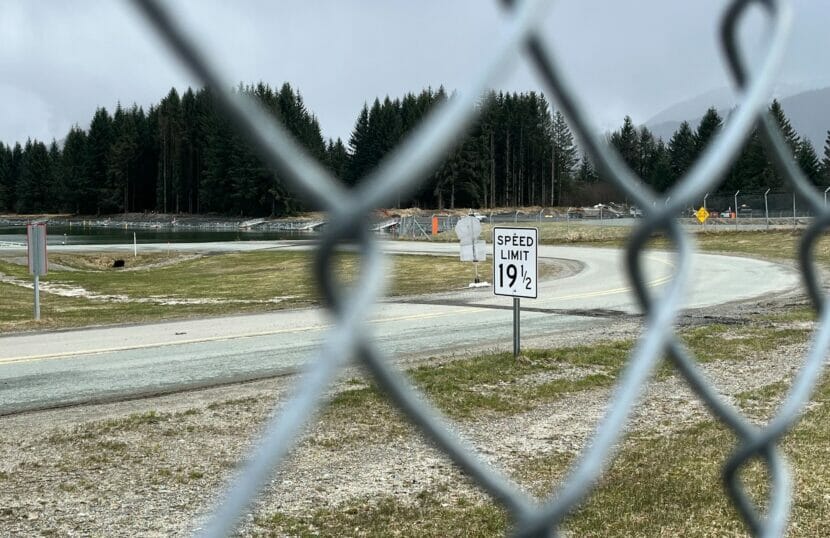
On a rainy afternoon at the Airport Dike Trail, Laura Minne is walking her dog, Bodhi. Over on the airport side of the fence, a speed limit sign tells drivers to go no faster than 19 ½ miles per hour.
When asked if she has a theory for why it’s such a specific number, Minne laughs.
“I can only imagine,” she says. “Whoever did it has to be pretty wonderful to have that humor.”
Airport Manager Patty Wahto says that person was a member of the airfield crew several years ago. The idea was to get the attention of the many workers who were driving faster than the actual speed limit of 20 mph.
“When the 20 mph signs were posted, you could ask people what the speed limit was,” Wahto wrote in an email. “They would either answer that they didn’t know, or that they didn’t think there was a speed limit posted.”
Studies show drivers remember fewer details about routes they’re more familiar with. Dwight Hennessy is a professor at Buffalo State University who studies traffic psychology.
“The reality is, we can’t pay 100% perfect, focused attention on everything all the time,” Hennessy said. “If you have a monotonous environment, where everything is the same, breaking it up grabs our attention. We’re more likely to process things once we’ve paid attention to them.”
That’s why the 19 ½ sign works, he said. It stands out, which makes drivers think about the speed limit more.
The explanation gave Minne, the trail goer, an idea.
“So let’s just try that on Egan, right?” she said.
In fact, the Alaska Department of Transportation will try out a slower speed limit on Egan Drive this winter, though not quite as low as 19 ½ mph. From Nov. 1 to Jan. 31, the speed limit will be 45 mph from Mendenhall Loop Road to the Sunny Point interchange — a reduction of 10 mph. New radar speed signs will let drivers know how fast they’re going.
Nathan Purves, a traffic and safety engineer for the department, said the goal is to reduce winter crashes near Fred Meyer.
“That was where the majority of crashes were happening,” he said. “When it was icy out, people were trying to make that turn through traffic. The goal is by slowing people down, we’ll have bigger gaps in the traffic, and it’ll be easier to make the crossing.”
But a reduction much bigger than 10 mph could do more harm than good, he said. Drivers make assumptions about the correct speed limit based on the characteristics of a road, like its width and what kinds of buildings surround it. If DOT suddenly changed Egan’s speed limit to 25 mph, Purves said, most drivers would probably feel more comfortable driving faster.
“There would be the outliers that are like, ‘It says we’re supposed to go 25 on Egan, I’m going 24 because I’m not going to speed,’ and then here comes somebody going like, ‘Well I’m comfortable at 65,’” he said. “This person that’s following the law is being endangered.”
Like the airport, some cities are trying to make all of their speed limit signs more noticeable. In Seattle, transportation officials have added signs at more frequent intervals. They also lowered speed limits on arterial and residential streets by 5 miles per hour. The city reported a 22% decrease in crashes.
Time will tell whether the temporary speed limit and radar signs will reduce wintertime crashes on Egan. But, at the airport, the 19 ½ sign seems to be doing the trick.
Curious Juneau
Are you curious about Juneau, its history, places and people? Or if you just like to ask questions, then ask away!



